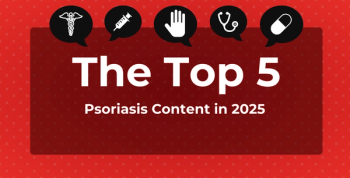
Following Release From Incarceration, People Living With HIV Have Higher Mortality Rates Than General Population
Following release from prison or jail, people living with HIV have higher mortality rates than the general population, indicating that resources are needed to identify and treat HIV and other medical needs following release from incarceration in order to reduce mortality.
With little existing data on causes and predictors of mortality after release from incarceration among people living with HIV, researchers investigated all-cause mortality in the patient population. They found that the patient population had higher mortality rates than the general population and concluded that resources are needed to identify and treat HIV and other medical needs following release from incarceration in order to reduce mortality.
The researchers collected and linked pharmacy, custodial, death, case management, and HIV surveillance data from Connecticut Departments of Correction and Public Health in order to form a cohort of all adults with HIV who were released from jails and prisons in Connecticut between 2007 and 2014. The researchers used this data to compare the mortality rate of adults with HIV released from incarceration with the general US and Connecticut populations.
“The USA has the highest incarceration rate worldwide. At least half of prisoners are incarcerated for drug-related offences, and the prevalence of HIV is disproportionately high in prisons and jails,” the authors stated. “Within-prison HIV-related mortality has declined in the past 2 decades, largely due to expanded use of antiretroviral therapy for universal treatment. Nearly all people who are incarcerated return to communities after release from prison, and challenges to HIV care continuity and relapse to substance use are well documented.”
In total, 1350 people with HIV who were released after 24 hours or more of incarceration were identified. Of these individuals, 184 died after index release. In addition, the crude mortality rate for people with HIV released from incarceration was 2868 deaths per 100,000 person-years and the standardized mortality ratio demonstrated that mortality was higher for this cohort compared to the general US population (6.97, 95% CI 5.96-7.97) and the Connecticut population (8.47, 95% CI 7.25-9.69).
The primary cause of death was reported for 170 individuals, with HIV/AIDS being the most common, followed by drug overdose, liver disease, cardiovascular disease, and accidental injury or suicide. Black race, having health insurance, being reincarcerated at least once for 365 days or longer, and having a high percentage of reincarcerations in which antiretroviral therapy was prescribed, were protective against mortality.
“The criminal justice system can assist some at-risk people with HIV to interface temporarily with needed medical services, but longitudinal engagement in community-based care is key to reducing mortality,” concluded the authors. “In addition to reducing the number of incarcerations, people with HIV need improved access to within-prison treatment for HIV, substance use disorders, viral hepatitis, and other comorbidities, with services continued without interruption after release.”
Looking forward, improved access to health insurance and case management are two crucial resources that can support the provision of these services in the community, they added.
This study is not the first to indicate negative clinical outcomes for people living with HIV following release from incarceration.
Reference:
Loeliger K, Altice F, Ciarleglio M, et al. All-cause mortality among people with HIV released from an integrated system of jails and prisons in Connecticut, USA, 2007-14: a retrospective observational cohort study [published online September 6, 2018]. Lancet HIV. doi: http://dx.doi.org/10.1016/ S2352-3018(18)30175-9.
Newsletter
Stay ahead of policy, cost, and value—subscribe to AJMC for expert insights at the intersection of clinical care and health economics.








































